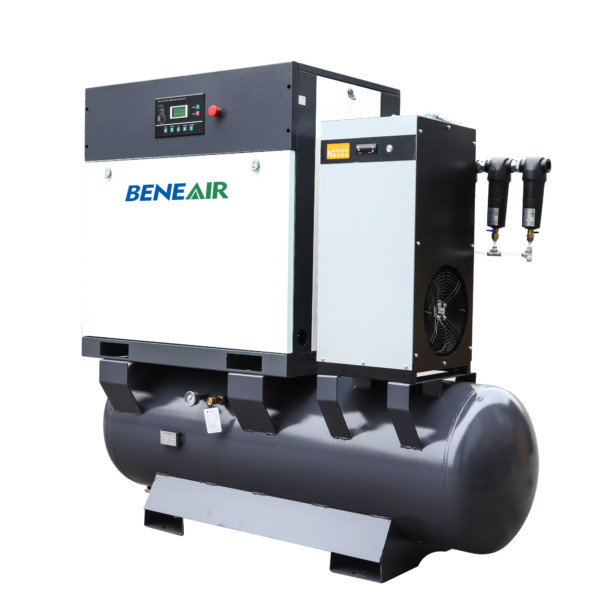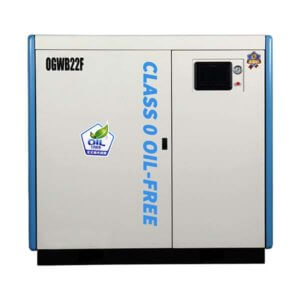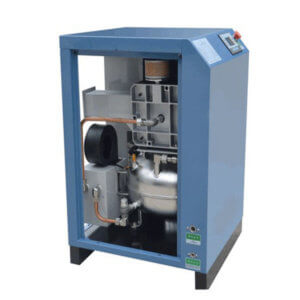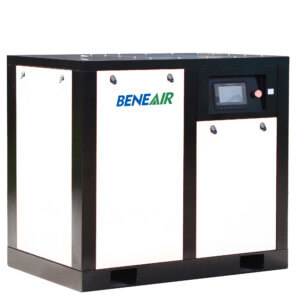Contents
Industrial processes depend heavily on air compressors. They provide the power to drive air tools and pneumatic equipment and contribute to other methods. Air compressors come in a variety of sizes and types, powered by electric motors or internal combustion engines. Rotary screw air compressors are commonly found in many industrial applications.
This guide provides an overview of the preventative maintenance required for industrial air compressors. By following the guidelines in this guide, you can help ensure that your air compressor operates at peak performance and helps reduce unscheduled downtime.
Preventative maintenance for air compressors
Preventative maintenance for air compressors
Preventative maintenance for air compressors should include the following steps:
1. Inspect the Air Compressor:
Begin your inspection by walking around the air compressor to check for any signs of damage or leaks in either the base or tank section of the unit. Look for evidence of oil or water leaks
2. Check the Air Filter:
The air filter helps keep the compressor clean and should be scrutinized and fixed regularly. Dirty filters can cause the compressor to overheat, reducing its life span.
3. Inspect the Belts and Pulleys:
Belts and pulleys should be checked for wear, slipped, or broken teeth.
4. Inlet Pressure Gauge:
The inlet pressure gauge should be used to check that the compressor is maintaining its normal operating pressure. Check to make sure it reads between 100 and 120 PSI under full load conditions. It will vary based on the compressor type and its application.
5. Exhaust Pressure Gauge:
The exhaust pressure gauge should ensure that the compressor is not overloading and that the discharge air is expelled at the correct pressure. The meter should read between 80 and 100 PSI.
6. Lubricate the Compressor:
All the moving parts of a compressor must be lubricated periodically to ensure smooth operation. Consult your compressor’s owner’s manual for the correct lubricant and frequency of lubrication..
7. Check the Cooling System:
Air compressors use either water or air to cool the internal components. Make sure the cooling system is working correctly by checking for leaks, proper drainage, and sufficient water in the system.
8. Hoses/Connections:
Check for any leaks in the pressure hoses or regulator connections
9. Drain Tank & Change Oil, if Applicable:
Your compressor’s owner’s manual will specify the change interval of either oil or fuel type that is required to operate it properly. Use this guide to determine when it is time to drain your air compressor tank and change the oil..
10. Test the Air Compressor:
Once you have completed your inspection, it is good to test the air compressor to ensure that it is operating correctly.
11. Check the Discharge Temperature:
Take the discharge air temperature with an infrared thermometer to ensure it is not overheating. Consult your compressor’s owner’s manual for maximum allowable limits.
12. Check for Leaks:
Using a soap and water mixture, check all air compressor components for any leaks. Tighten any connections that are leaking, or replace any hoses that are leaking.
13. Performing Preventative Maintenance regularly:
Perform your compressor inspections regularly, even if you have not been experiencing any problems. This will help ensure that the air compressor is operating correctly and can detect potentially costly issues before they occur.

What is the best practice for performing preventative maintenance?
What is the best practice for performing preventative maintenance?
The best practice for performing preventative maintenance is regularly performing frequent and thorough inspections. This serves two purposes:
1. It ensures that the compressor is operating correctly. If you are not experiencing any problems with your air compressor, it does not necessarily mean that everything is OK. Regular inspections can help locate problems before occurring, and this will save your time and money.
2. It will help familiarize yourself with the compressor, helping to detect problems before they become serious. For example, if you check your air filter regularly, you would be able to tell immediately if it begins to get clogged up and needs changing. This can save a lot of unnecessary downtimes, which could cost you money and inconvenience.
Signs that show you need to perform Preventative maintenance
Signs that show you need to perform Preventative maintenance
1. Decrease in air output:
This can indicate a clogged air filter, loose belt or pulley, slipping belt or pulley, worn bearings.
2. Compressor surges:
This can be caused by an obstructed/clogged exhaust port (not allowing the compressor to expel pressure properly) or a dirty oil reservoir
3. High discharge temperatures:
This can indicate a clogged air filter, dirty oil reservoir, or overloading of the compressor.
4. Excessive noise:
This could be caused by several factors such as a loose belt or pulley, worn bearings, or even something caught in the fan.
5. Vibrations:
This could be caused by several factors such as a loose belt or pulley, worn bearings, or even something caught in the fan.
6. Leaks:
This can indicate several problems such as a loose connection, damaged hose, or faulty valve.
7. Odor:
A strange smell could be indicative of a dirty air filter or something caught in the fan.
8. Unusual smoke:
This could indicate an oil leak, or that the compressor is being overloaded.
How often should you perform Preventative Maintenance?
How often should you perform Preventative Maintenance?
On a regular basis:
It is best practice to perform preventative maintenance regularly, even if you have not been experiencing any problems. This will help ensure that the air compressor is operating correctly and can detect potentially costly issues before they occur.
On a weekly basis:
This may be a little tedious but is often enough to ensure that your air compressor remains in proper operating condition.
On a monthly basis:
This is perhaps overdoing it a bit, but if you have the time and patience to do it, then why not? The more thorough you are at performing preventative maintenance, the less likely you will experience any problems with your air compressor.
On a yearly basis:
This is the least often you should perform preventive maintenance, but it is still a good idea to do it at least once a year. You can detect problems like these before they have a chance to cause severe damage.
Closing
It is important to perform preventive maintenance regularly to keep your air compressor in good working order. By inspecting the compressor frequently, potential problems can be identified and fixed before severe damage occurs. Performing preventative maintenance regularly will help ensure that your air compressor is always in top condition.










Leave A Comment